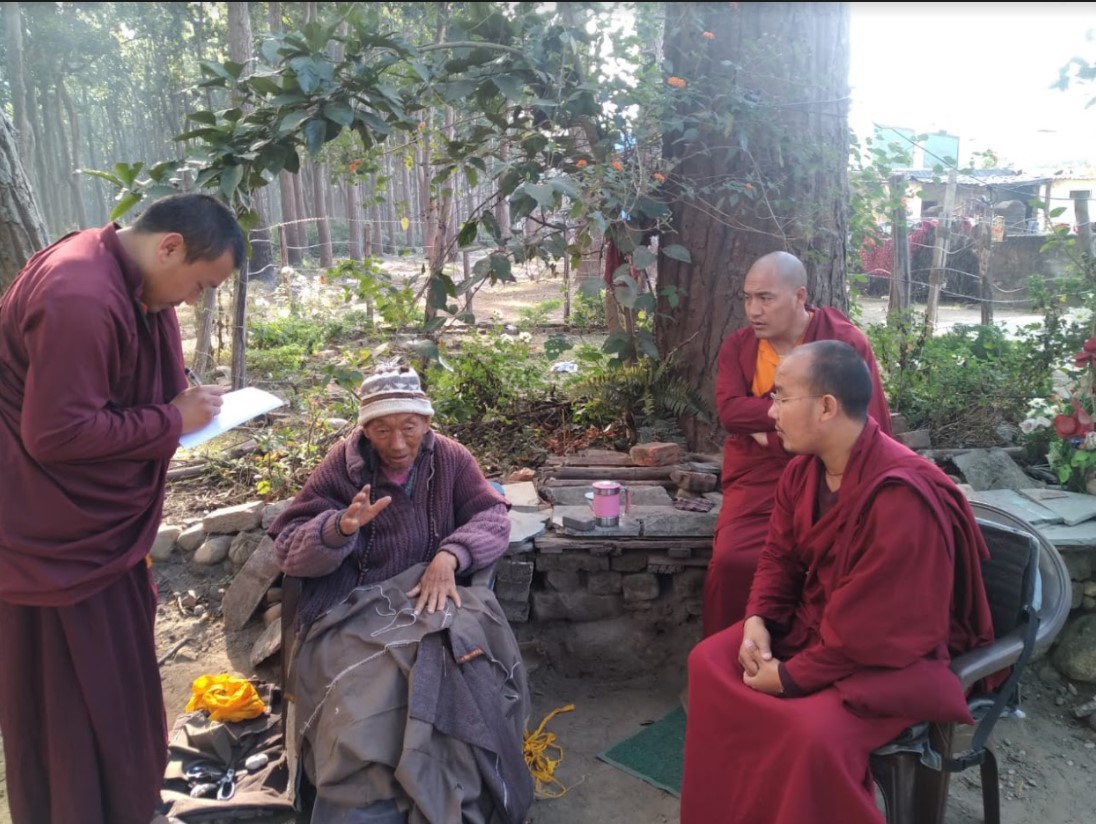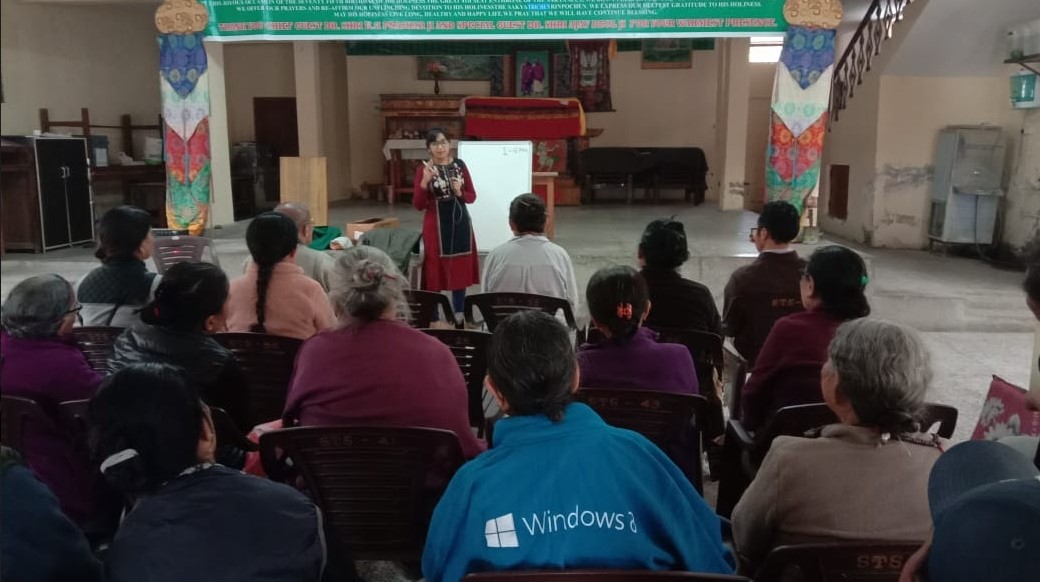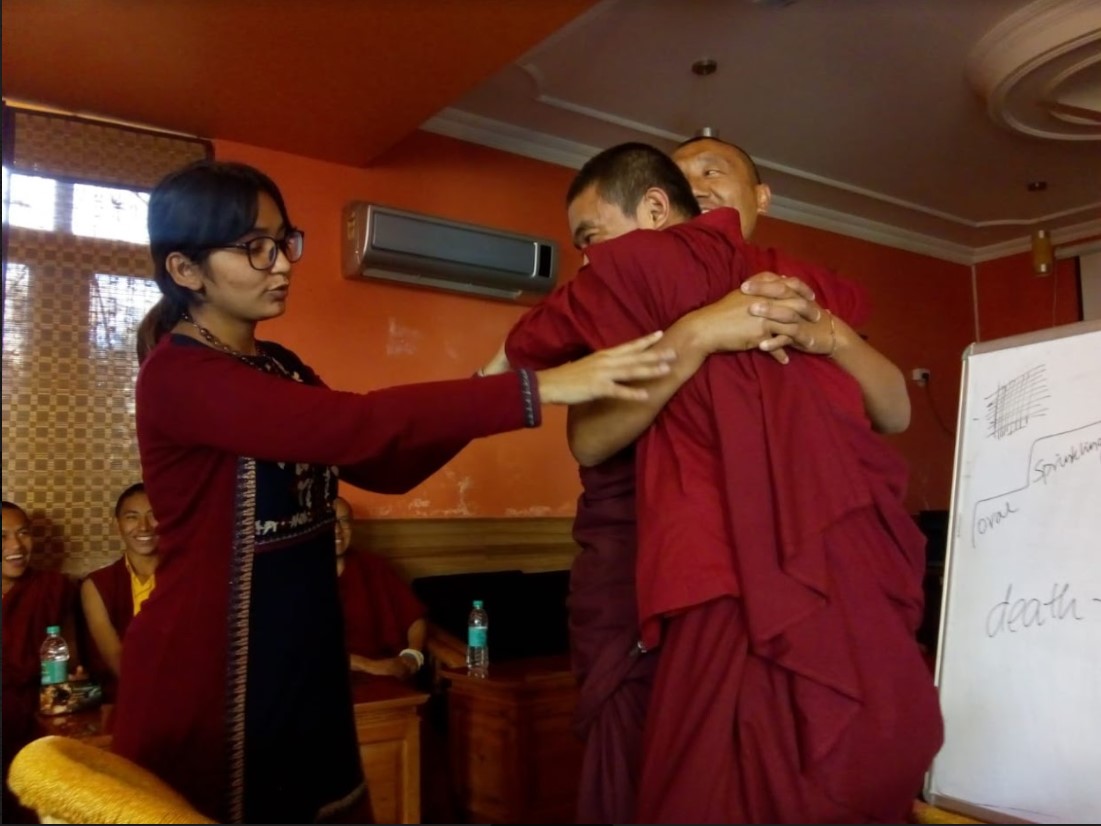As Buddhist leaders explore inroads into pastoral care and palliative treatment, Bylakuppey-based Dr. Sneha Rooh has developed a program of palliative care that is tailor-made for monastics to train in. This is a monastic-driven, fundamentally pastoral initiative that Buddhists in traditional regions like the Tibetan plateau, the Himalayan regions, and India have long needed. Titled Monastics in Palliative Care, this program is split into 13 modules, like Nursing Roles for a Monastic (module 9) and Social Pain (module 3). I had the chance to speak to her about how she was motivated to design this unique program and its significant implications. It deserves support from every Buddhist leader that wishes to see a deeper engagement by monastics in two of the most important and inevitable dimensions of human life: illness and dying.
“My first formal training in palliative care was in Pune, followed by Hyderabad and then Kozhikode. To be honest, I had decided against practicing allopathic medicine and argued against it because I didn’t like the competition and also thought only the organ or the pathology was addressed and not the person,” she tells me. Dr. Rooh planned to live in Auroville after her internship but somehow that didn’t happen and she ended up going to Bylakuppey, a Tibetan settlement five to six hours from Bangalore.
“That was to see the monastery from where the lama of my Buddhist meditation centre had come. The khenpo there offered me a job and I loved the quiet and the green. I was estranged from my family and father at the time and hence took up this job. It was here that the seed idea of holistic care that I had in me found the soil, I think. What was important to me as a practitioner became clearer: person-centred care that addresses the totality of suffering pain, that pays attention to the quality of inner and outer life. I would still spend two years hesitating to be in the field. Yet I didn’t know if the expertise I could provide was possible in the given system or such a branch existed.”
Dr. Rooh decided to focus on Buddhist-oriented methods in her module “Monastics in Palliative Care” because of her experience at the monastic hospital and brief brush with Buddhist teachings. Initially sceptical, she was able to see similarities between both of them and how they can enhance each other. The commonalities shared by palliative care and Buddhist teachings ask us to slow down and pay attention, doing away with unnecessary preoccupations, and focus on quality of life. Both put emphasis on addressing spiritual pain and relieving suffering in all its forms, especially during long drawn illnesses as death approaches.
“Buddhism focuses on mind training that patients in palliative care would greatly benefit from. We know that reducing anxiety and stress reduces patients’ physical pain scores. People in palliative care become reflective and have questions about their chronic suffering and impending death. Even without approaching the concepts of impermanence and dependent origination, such ideas could already become apparent when the person is able to train their minds. Also, Buddhism sees illness, suffering, and the transition period of death as important practice opportunities, which is exactly that the stage of patients is palliative care is,” she tells me.

Palliative care looks at providing quality pain control and symptom alleviations to enable the individual to practice mind training and receive the teachings on dependent arising and impermanence even in its initial level. It promises to address total pain that includes mental, social and spiritual pain apart from high quality physical pain relief. It pays attention to both quality of life for the patient and family, from the time of diagnosis up to death and bereavement. And most importantly because it opens up positions of pastoral care and chaplaincy services in the multi-disciplinary team, which is a role befitting monks and nuns.
“So, it was absolutely clear to me what people at both ends [palliative care and administrators and doctors at Tibetan settlement hospitals] couldn’t see,” she said. “I would say that presently, monastics are absent in the hospitals and in community health care provision. Also, palliative care is absent in settlement hospitals. There is also a lack of space for palliative care and monks at settlement hospitals. To the average Indian and Tibetan, ‘posh’ equipment and more gadgets and devices denote better treatment. They choose to go into private care after a few attempts at the settlement hospitals.”
Dr. Rooh said: “I devised this program because the team I was working in was had contact with officials in the Government of Bhutan. I thought this would be beneficial for them to train the monastics and because integration at the beginning stage is better and seamlessly possible. The idea didn’t appeal to both my team and Bhutanese team but since it was online, I started writing to everyone I know about this, so that monastics from across the world could participate. The program has 13 modules and weaves together the concepts of palliative care like person centred care, multi-disciplinary team, grief and bereavement and basic nursing care with Buddhist concepts that the monastics already are adept at. Each module has readings from Buddhist teachers about caring for the ailing, proving non-sectarian care as well as research papers and instructional booklets from other Buddhist chaplaincy programmes. Each module has reflection questions for report writing and sometimes group work.”
Presently, lay practitioners go to the monks and the nuns only to enquire if a particular surgery should be undertaken or not or for pujas and funerary rites. When it comes to end-of-life care, monastics only provide care for older monks and nuns. There is also some distrust between health professionals and monastics. Dr. Rooh appeals to us to consider: “Imagine what a lay Tibetan would feel if a monastic was at their bedside providing hope, strength and guidance even as they tend to the bedsore? For the family what care and support would this be as they make sense of their loss. Imagine if Monastics and doctors were in the same team, each providing the other a whole different set of information about the patient and family needs and what effect this collaboration will have on the ailing person and their family?”
She continues: “for the monastic, wouldn’t this be a practical in compassion? In observing impermanence? In cultivating bodhicitta and motivation for their own practice, even!”
Dr. Rooh feels that her two months at Sakya Hospital in Dehradhun was sort of a pre-pilot, testing the water phase. “Many monasteries didn’t give us the opportunity to train their students saying that they were busy with religious activities or study. And when they were free to come, they didn’t spend much time with us. She notes that the monastics initially would come because they were forced to. “But as they started doing group work and the days passed, they listened and became quite interested. At the end, when it was feedback time, they were mostly positive with some suggestions that I lead the guided meditations slowly.”

With one monastic group in Clementown, Dr. Rooh’s team asked them to take a spiritual pain questionnaire to the ailing people in their community. Before leaving the room, one of the more reluctant monastic students turned around and said to her, “even if I get blessings or If I get yelled at, I will dedicate it all to you.” I was suddenly hesitant – were they ready? More importantly, was the community ready? They had gone in groups and each group came back touched. In the final feedback session, everyone had something to say, which was completely different to when the initiative began. The monk I mentioned made a video testimonial to encourage more monastics to take the training and told me that I would be one of the important people he remembers in his life. I knew then that I was on the right track and that the time was ripe, though the work is immense.”
Dr. Rooh says: “For change to really be effective and long lasting it has to be ingrained into the system level, it is absolutely crucial that prominent Buddhist leaders express support for this project, or it will be a sporadic monk or two who will experience the fulfilment that monk experienced, for this we need leaders like His Holiness the Dalai Lama, Dzongsar Khyentse Rinpoche or Mingyur Rinpoche to intervene. We need decisions at CTA level to incorporate palliative care at every settlement hospital level and for it to be covered by TMS. With this on one hand we also need palliative care to become part of the training at monastic level along with Teachings on Bardo and reflection on impermanence, and practical serving time in the settle hospitals and ailing people in their homes, not when called but as a duty of being a monastic -like clinical postings.”
Dr. Rooh’s revolutionary call to action needs high lamas’ attention and support because they are far-sighted, and because they are able to encourage and motivate change at very broad levels.
She suggests that prominent and senior lamas often have schools or university faculties and fellowship programs that could fund palliative care as a specialized course, along with Bardo and higher teachings. In the meantime, monasteries and settlement hospitals could have basic practical level teaching.
Another work that these leaders and their concerned institutes can take up is the translation of palliative care texts. Right now, all the available Buddhist chaplaincy courses (including this one) and all materials in palliative care for volunteers and nursing assistants are in English. Dr. Rooh believes this to “hinder its penetration and is not equitable.” She says: “We need these documents to be translated and contextualized within the Tibetan context so that every monk and nun from the Tibetan Plateau, the Himalaya region in general, and across the world can learn and practice in their communities. The settlement hospitals are ideal practice ground – even before we undertake building hospices like King Ashoka did – for trained monastics and existing monasteries a learning place where these modules can be taught.”
The work is considerable and I hope it gets started at a scale and reaches a satisfactory position during my lifetime and that I get to play a role to make this happen – both to accumulate merits and also to enable suffering and death to become pathway to liberation for myself and others.”


